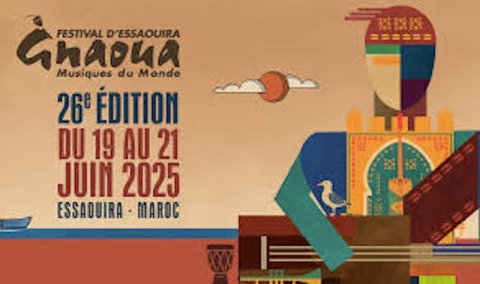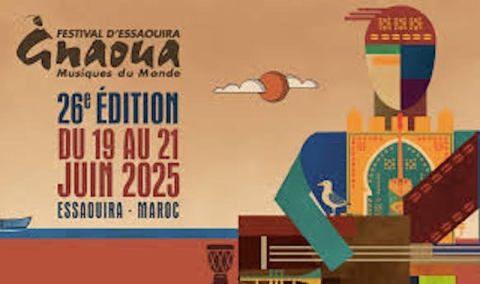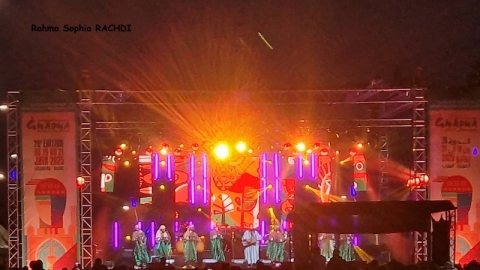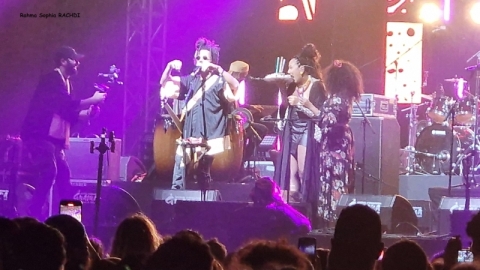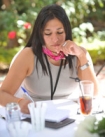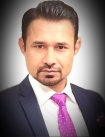Music
THE GNAOUA WORLD MUSIC FESTIVAL IS A GLOBAL CULTURAL BEACON
ESSAOUIRA-19-21JUNE 2025

THE LEILA, Reggada-Rock Singer form Oujda (Source: Rahma Sophia Rachdi, Jedi Foster)
USPA NEWS -
Since its inception in 1998, the Gnaoua Festival of Essaouira has grown into one of the world’s most unmissable music events, brilliantly showcasing the fusion of traditional Moroccan sounds with global musical currents. Over three days and nights, it attracts around 400,000 festival-goers, with more than 300 international artists, including 35 Maâlems performing over 50 concerts. Supported by 70 sponsors, the festival transforms Essaouira into a vibrant hub of rhythm, cultural exchange, and celebration.
Neila Tazi, the festival’s producer and founder, emphasizes its unique role: “The Gnaoua Festival is not just a musical event, but a cultural crossroads where Morocco’s rich heritage meets the world. It stands as a powerful symbol of openness, creativity, and dialogue, making it an essential meeting place for artists and audiences alike.”
Amongst other artists, at the Gnaoua Festival’s closing concert, THE LEILA electrified the audience with her signature “Reggada-Rock” style. Dressed in black, she punctuated her performance with rhythmic beats on her bendir drum, seamlessly blending traditional Moroccan percussion with a modern, relaxed fusion.
Neila Tazi, the festival’s producer and founder, emphasizes its unique role: “The Gnaoua Festival is not just a musical event, but a cultural crossroads where Morocco’s rich heritage meets the world. It stands as a powerful symbol of openness, creativity, and dialogue, making it an essential meeting place for artists and audiences alike.”
Amongst other artists, at the Gnaoua Festival’s closing concert, THE LEILA electrified the audience with her signature “Reggada-Rock” style. Dressed in black, she punctuated her performance with rhythmic beats on her bendir drum, seamlessly blending traditional Moroccan percussion with a modern, relaxed fusion.
Since its inception in 1998, the Gnaoua Festival of Essaouira has grown into one of the world’s most unmissable music events, brilliantly showcasing the fusion of traditional Moroccan sounds with global musical currents. Over three days and nights, it attracts around 400,000 festival-goers, with more than 300 international artists, including 35 Maâlems performing over 50 concerts. Supported by 70 sponsors, the festival transforms Essaouira into a vibrant hub of rhythm, cultural exchange, and celebration.
Neila Tazi, the festival’s producer and founder, emphasizes its unique role: “The Gnaoua Festival is not just a musical event, but a cultural crossroads where Morocco’s rich heritage meets the world. It stands as a powerful symbol of openness, creativity, and dialogue, making it an essential meeting place for artists and audiences alike.”
Neila Tazi, the festival’s producer and founder, emphasizes its unique role: “The Gnaoua Festival is not just a musical event, but a cultural crossroads where Morocco’s rich heritage meets the world. It stands as a powerful symbol of openness, creativity, and dialogue, making it an essential meeting place for artists and audiences alike.”
From jazz-Gnaoua fusions to afro-cuban beats, and from intimate Zaouias to the open beach stages, the festival’s 26th edition reaffirmed its spirit of innovation and tradition. Beyond the music, the festival hosts vibrant forums that address critical themes such as human mobility, cultural dynamics, and migration, with contributions from renowned poets, historians, and filmmakers.
The festival’s impact resonates well beyond Morocco, attracting global media coverage and fostering long-lasting cultural bridges. As Neila Tazi puts it, “Gnaoua is a living heritage, a dynamic force that carries the voices of generations and cultures into the future.”
The festival’s impact resonates well beyond Morocco, attracting global media coverage and fostering long-lasting cultural bridges. As Neila Tazi puts it, “Gnaoua is a living heritage, a dynamic force that carries the voices of generations and cultures into the future.”
SPOTLIGHT ON THE LEILA: A RISING STAR FROM OUJDA SINGING REGGADA-ROCK TO BE FOLLOWED
Emerging from the vibrant cultural heart of Oujda in northeastern Morocco, THE LEILA is a young artist deeply rooted in the rich oriental traditions of her region. Influenced by the folkloric chants and dances of Reggada, she brings a fresh, powerful voice to the scene, marked by a uniquely raspy vibrato that sets her apart.
Emerging from the vibrant cultural heart of Oujda in northeastern Morocco, THE LEILA is a young artist deeply rooted in the rich oriental traditions of her region. Influenced by the folkloric chants and dances of Reggada, she brings a fresh, powerful voice to the scene, marked by a uniquely raspy vibrato that sets her apart.
At the Gnaoua Festival’s closing concert, THE LEILA electrified the audience with her signature “Reggada-Rock” style. Dressed in black, she punctuated her performance with rhythmic beats on her bendir drum, seamlessly blending traditional Moroccan percussion with a modern, relaxed fusion. Her engaging and often introspective lyrics explore themes of spleen, luck, misfortune, and destiny, resonating perfectly with the festival’s celebration of Moroccan spirituality and the trance rhythms of Gnaoua music.
THE LEILA’s music is a bold, contemporary expression that honors the onomatopoeic chants and the syncopated dances accompanied by Moroccan castanets, making her a true voice of her generation and a vibrant addition to the Gnaoua legacy
Report by ou (handicapped/ wheelchair user) correspondent Rahma Rachdi, on site
THE LEILA’s music is a bold, contemporary expression that honors the onomatopoeic chants and the syncopated dances accompanied by Moroccan castanets, making her a true voice of her generation and a vibrant addition to the Gnaoua legacy
Report by ou (handicapped/ wheelchair user) correspondent Rahma Rachdi, on site
A SPECIAL NOTE OF GRATITUDE AND A CALL FOR TRUE INCLUSION OF THE DISABLED
In the heart of a vibrant and emotional celebration, one gesture stood out, quiet, sincere, and profoundly human.
Our deepest thanks go to Amine, the tall and gracious man with the silver beard, whose actions spoke volumes where official channels had fallen silent. While the general organization never responded to our emails, despite early efforts to signal reduced mobility needs, Amine instinctively stepped in with grace and care.
With empathy and elegance, he carved a path through the crowd, personally escorting both myself and another wheelchair user, a fellow blogger, ensuring we were not just present, but fully part of the moment. Out of all the attendees, we were only two wheelchair users, and thanks to him, we were treated not as exceptions, but as equal participants with dignity and visibility.
In the heart of a vibrant and emotional celebration, one gesture stood out, quiet, sincere, and profoundly human.
Our deepest thanks go to Amine, the tall and gracious man with the silver beard, whose actions spoke volumes where official channels had fallen silent. While the general organization never responded to our emails, despite early efforts to signal reduced mobility needs, Amine instinctively stepped in with grace and care.
With empathy and elegance, he carved a path through the crowd, personally escorting both myself and another wheelchair user, a fellow blogger, ensuring we were not just present, but fully part of the moment. Out of all the attendees, we were only two wheelchair users, and thanks to him, we were treated not as exceptions, but as equal participants with dignity and visibility.
However, let this also be a gentle but firm reminder to the organizing team and to all public events: inclusion must go beyond slogans. It must be planned, resourced, and implemented in line with the laws and regulations that guarantee accessibility for all, especially for people with disabilities who often go to extraordinary lengths just to be part of society.
We, wheelchair users, do not ask for favors. We ask for rights and for the same freedom of movement and participation others enjoy. In a society that claims to be inclusive, access must not be left to chance or goodwill, it must be embedded in the design.
Thank you, Amine, for showing the way, not only in the literal sense, but in spirit.
We, wheelchair users, do not ask for favors. We ask for rights and for the same freedom of movement and participation others enjoy. In a society that claims to be inclusive, access must not be left to chance or goodwill, it must be embedded in the design.
Thank you, Amine, for showing the way, not only in the literal sense, but in spirit.
Liability for this article lies with the author, who also holds the copyright. Editorial content from USPA may be quoted on other websites as long as the quote comprises no more than 5% of the entire text, is marked as such and the source is named (via hyperlink).

